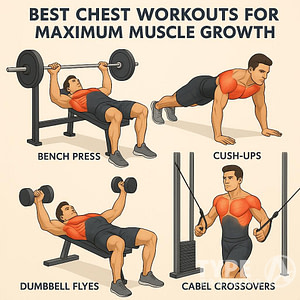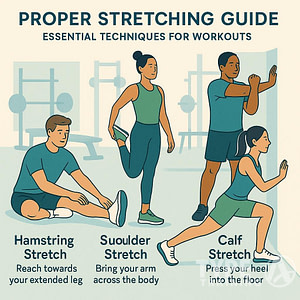The incorporation of yoga into an athlete’s training routine can offer numerous benefits that go beyond the well-known aspects of flexibility and relaxation. For athletes of all levels and sports, it can provide a competitive edge by enhancing their overall performance, strengthening their mental focus, and decreasing the risk of injury.
Yoga is a versatile practice that can be customized to address the specific needs of individual athletes. By emphasizing correct alignment and mindful breathing, athletes can develop greater body awareness, which in turn leads to improved balance, agility, and power. Additionally, yoga’s focus on mindful breathing can lead to enhanced lung capacity and better overall endurance.
Key Takeaways
- Yoga enhances athletic performance through improved flexibility, balance, and mental focus.
- Sport-specific yoga techniques can be incorporated into training and recovery routines.
- Choosing the right yoga style and class ensures optimal benefits for athletes and injury prevention.
Benefits of Yoga for Athletes
Physical Benefits
Yoga can significantly enhance your athletic performance through various physical benefits. By incorporating yoga into your routine, you can improve your flexibility and mobility, allowing for a greater range of motion and reduced risk of injuries. Additionally, yoga helps increase strength and balance, which are vital for stability and control in various sports.
Popular posts:
Yoga also aids in recovery by enhancing circulation and lymphatic flow, enabling muscles to process metabolic byproducts more quickly and promoting faster healing. Furthermore, yoga helps develop core strength, which is essential for overall stability and improved athletic performance.
Mental Benefits
Aside from the physical advantages, yoga offers valuable mental benefits for athletes. By practicing yoga consistently, you can enhance your focus and concentration, allowing you to stay present and in control during high-pressure situations. This improved mental focus can also lead to better decision-making and increased overall performance.
Moreover, yoga promotes relaxation and stress reduction, which can help you maintain mental equilibrium and perform optimally in your sport. By integrating yoga postures and breathing techniques into your training routine, you can achieve a greater sense of mental clarity and balance that will positively impact your athletic performance.
Yoga Poses and Techniques for Athletic Performance
Flexibility and Balance Poses
Research shows that icorporating flexibility and balance poses into your yoga practice can greatly improve your athletic performance. These poses, such as the Downward-Facing Dog and Tree Pose, help increase your range of motion and body awareness. By practicing these poses regularly, you can enhance your coordination and alignment, leading to more efficient movement during athletic activities.
Strength and Power Poses
Strength and power poses, like the Warrior series and Chair Pose, target larger muscle groups and can improve your overall strength and stamina. Hatha yoga and Vinyasa styles are particularly effective for athletes, as these practices focus on strengthening muscles through dynamic movement. Incorporating these yoga poses into your workout routine not only builds physical strength but also boosts your mental resilience, crucial for high-pressure athletic situations.
Breathing Techniques and Meditation
Mastering specific breathing techniques, such as Pranayama, can greatly enhance an athlete’s performance. Controlled breathing helps increase lung capacity and improves oxygen intake. Incorporating meditation practices into your yoga routine can also yield significant benefits. Focused, mindful meditation can help athletes better manage stress and anxiety, leading to improved focus and concentration during competitions.
To summarize, incorporating yoga poses and techniques that focus on flexibility and balance, strength and power, and breathing techniques and meditation can greatly improve athletic performance. Make these practices a part of your regular exercise routine, and you’ll see positive changes in your range of motion, strength, and mental fortitude.
What Sports Benefit from a Yoga Practice?
Yoga is a fantastic addition to the training regimen of athletes in various sports. The practice of yoga improves flexibility, balance, coordination, and lung function, all crucial components for success in various athletic endeavors.
For instance, runners can significantly benefit from incorporating yoga into their routine. Regular yoga practice can help build muscles, prevent injuries, and improve mental focus, leading to enhanced performance on the track or trail. Additionally, yoga enhances your lung function, which ensures better oxygen delivery during runs, ultimately improving your endurance. Learn more about yoga benefits for runners.
Yoga works wonders for sports that require balance and coordination, such as gymnastics or martial arts. By practicing asanas like tree pose, you can master control over your body, improve your balance and prevent injuries. Moreover, the mind-body connection developed through yoga can sharpen your focus, which is essential for sports like archery and shooting.
Strength-based sports like weightlifting, rugby, or basketball also reap the benefits of yoga. A consistent yoga practice can help build core and upper-body strength and improve body awareness, leading to enhanced control and power in your performance. Explore the benefits of arm balances to gain strength and balance.
In sports like swimming or cycling, where flexibility and range of motion are crucial, yoga can provide significant advantages. By implementing poses like downward-facing dog and pigeon pose, you’ll see improvements in your body’s overall flexibility, allowing for smoother movements and a reduced risk of injury.
Lastly, it’s important to remember that the mental aspect of sports performance is just as vital as the physical. Yoga can help you effectively manage stress, a key contributor to recovery and performance. Techniques like deep breathing exercises and meditation assist in reducing anxiety levels, allowing you to approach your sport with increased focus and determination.
In conclusion, incorporating yoga into your training routine can benefit athletes across a wide range of sports. No matter your discipline, give it a try and see the difference it makes in your overall performance.
Incorporating Yoga into Training and Recovery
Yoga can be an excellent addition to your training routine, providing numerous benefits for athletes. By incorporating yoga into your schedule, you’re likely to see improvements in your performance, flexibility, and endurance.
As an athlete, consider including yoga as cross-training in your workout routine. This practice can help build strength and stability that support your primary sport. With yoga, you’re not only addressing your physical fitness but also enhancing mental focus and relaxation.
There are various types of yoga suited for different purposes. To target flexibility and muscle recovery after intense workouts, try restorative yoga or yin yoga, which focus on passive stretching and relaxation. These practices can improve muscle imbalances and prevent injuries associated with overworked or tight muscles.
Conversely, for a more dynamic experience, practice power yoga. This form of yoga focuses on strength-building postures and cardiovascular fitness, which can complement your regular training regimen. Integrating power yoga into your routine can contribute to improved athletic performance and lead to better endurance overall.
When planning your workouts, remember to allocate time for yoga sessions, just as you would for any other aspect of your training. By finding a balance between your primary sport and yoga, you’ll maximize the benefits and ultimately elevate your athletic performance.
In conclusion, incorporating yoga into your training and recovery can significantly enhance your athletic performance. So, select the type of yoga that best aligns with your goals to start reaping the rewards of this mindful practice.
Adapting Yoga for Specific Sports
As an athlete, incorporating yoga into your training routine can improve your performance in various sports. By adapting yoga poses and techniques to suit specific sports, you can enhance your flexibility, balance, and strength.
Yoga for Runners
Runners may find incorporating yoga into their training, particularly beneficial since it can help improve flexibility in your hips and hamstrings. Poses such as the pigeon pose, hamstring stretch, and downward-facing dog can target these areas and help you run more efficiently while reducing injury risk.
Yoga for Cyclists
For cyclists, increased flexibility in the hips, hamstrings, and lower back is essential for performance on the bike. Incorporating poses such as the cat-cow stretch, seated forward bend, or the child’s pose can ease tightness in these areas, helping you maintain a strong and comfortable cycling position.
Yoga for Golfers
Golfers rely heavily on their core and spine rotation for an efficient and powerful swing. Adapting yoga to your golf practice through poses like the seated spinal twist, cobra pose, and standing forward bend can enhance your overall swing and prevent injuries on the golf course.
Yoga for Soccer Players
Soccer players require agility, power, and balance. Poses like the warrior pose series and chair pose can help strengthen your legs, core, and improve your balance, translating to better performance on the field and reduced risk of injury.
Yoga for Basketball Players
To improve your basketball skills, try incorporating yoga poses such as the tree pose, boat pose, and triangle pose. These poses can enhance your agility, balance, and strength, necessary for jumping, pivoting, and quick movements on the court. Even basketball legends like LeBron James advocate for the benefits of yoga in athletic performance.
Yoga for Football Players
As a football player, adding yoga to your training can help improve your flexibility, strength, and balance. Poses like the plank, side plank, and extended triangle pose can target various muscle groups, helping you build power and stability and reducing the risk of injuries on the field.
Yoga for Injury Prevention
Practicing yoga can offer numerous benefits for athletes, one of which is injury prevention. Incorporating yoga into your routine can help prevent injury by improving flexibility, addressing muscle imbalances, strengthening movement patterns, and aiding in recovery.
Yoga can improve your flexibility by stretching and lengthening tight muscle groups. As an athlete, you may experience tightness in certain muscles due to repetitive motions or overuse in your sport. By including yoga in your regimen, you can increase your range of motion and enjoy a reduced risk of injury.
Muscle imbalances often lead to injuries due to compensations and overuse. Fortunately, yoga can help address these imbalances. Many yoga poses engage different muscle groups, including smaller stabilizer muscles that are often neglected in traditional sports training. This can result in more balanced strength and stability, which can prevent injury.
Another important aspect of injury prevention is strengthening movement patterns. Yoga emphasizes proper alignment and body awareness, which can carry over to your sports-related activities. By practicing yoga, you can become more aware of your body mechanics and develop better movement habits, reducing your risk of injury during athletic endeavors.
Lastly, yoga can aid in recovery, a crucial aspect of injury prevention. Many yoga poses promote relaxation and increase blood flow, which can fight inflammation and help deliver much-needed oxygen to recuperate muscle tissue. Practicing yoga can also help manage stress and maintain mental focus, giving you an edge in your sport.
Incorporating yoga into your athletic training can yield various benefits that contribute to injury prevention. By addressing flexibility, muscle imbalances, movement patterns, and recovery, you can optimize your performance and protect your body from injury.
Choosing the Right Yoga Style and Class
source: antarayoga.nl
To improve your athletic performance with yoga, it’s essential to choose the right yoga style and class that cater to your specific needs and goals. Different styles of yoga focus on various aspects like flexibility, strength, balance, and energy. So, to find the one that suits you best, assess your objectives and current fitness level.
As a beginner, you might want to opt for Hatha Yoga, which is slow-paced and gentle, allowing you to familiarize yourself with yoga poses and align your body correctly. Hatha Yoga can help improve your mood and increase your respiratory capacity, enabling you to perform better in your sport.
Vinyasa, on the other hand, may be more suitable for those with some experience or who seek a more dynamic practice. This style focuses on synchronized movement with breath, promoting energy flow and body coordination. Regular Vinyasa classes can help strengthen your muscles, enhance your flexibility, and boost your overall athletic ability.
When selecting a class, consider the teacher’s experience, class size, and whether it caters to athletes like you. Smaller classes often allow for personalized attention, making it easier to fine-tune your practice and learn proper alignment. Additionally, some classes may incorporate sport-specific yoga poses, targeting areas essential for your athletic performance.
Finally, it’s crucial to listen to your body and make necessary adjustments. If a particular style doesn’t suit you, don’t hesitate to explore other options until you find the one that meets your preference and performance goals. Remember, the key to successful yoga practice lies in consistency and dedication, leading to an improved athletic performance over time.
Related Post
Frequently Asked Questions
How does yoga enhance flexibility for athletes?
Yoga can help improve your flexibility by targeting specific muscle groups and gradually stretching them. As you practice yoga consistently, these muscle groups will become more flexible, allowing for a greater range of motion in your joints. This increased flexibility can help reduce the risk of injury and enhance your overall athletic performance.
Which yoga poses are most beneficial for athletes?
There are several yoga poses that can be beneficial for athletes, including Downward Dog, Pigeon Pose, and Warrior Pose. These poses focus on improving flexibility, strength, and balance, all of which contribute to better athletic performance. Incorporate these poses into your yoga routine for an added boost in your sport.
How can yoga improve an athlete’s endurance?
Yoga can improve your endurance by building both mental and physical stamina. As you hold poses for extended periods, you’re training your muscles and developing the mental focus necessary to push through challenging exercises. Regular yoga practice can lead to increased lung capacity, improved muscle control, and greater mental resilience, all contributing to better endurance for athletes.
Why is yoga important for professional athletes?
Yoga is important for professional athletes as it helps them maintain a strong and healthy body, preventing injuries and aiding in recovery. By incorporating yoga into their training regimen, athletes can enjoy numerous benefits such as improved flexibility, balance, and mental focus, leading to enhanced overall performance.
What impact does yoga have on overall athletic performance?
Yoga can have a positive impact on your overall athletic performance by improving flexibility, balance, endurance, and mental focus. These elements are crucial for athletes across all sports, and practicing yoga consistently can help you fine-tune your skills and reach your full athletic potential.
Which type of yoga is most suitable for athletes?
There isn’t a one-size-fits-all answer, as the type of yoga best suited for you may depend on your sport and individual needs. However, Hatha and Vinyasa yoga styles are often popular choices for athletes, as they incorporate a range of poses, strength-building exercises, and mindful breathing techniques that can be adapted to your specific needs. Experiment with different styles to find which approach fits your goals and brings the best results.












